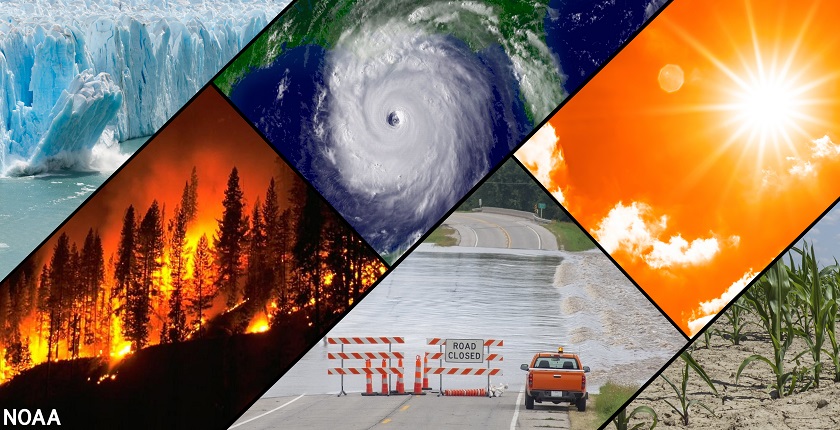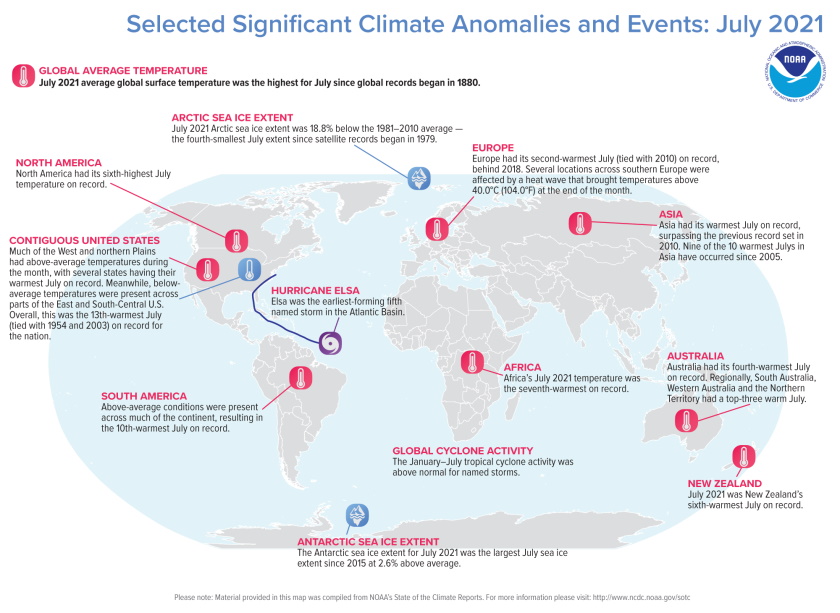
Photo: NOAA
The combined land and ocean surface temperature was 0.93 degrees Celsius above the 20th century average of 15.8 degrees in July, making it the world’s hottest month ever recorded, according to the National Oceanic and Atmospheric Administration (NOAA), part of the United States Department of Commerce.
With last month’s data, it remains very likely that 2021 will rank among the world’s 10 warmest years on record, NCEI’s Global Annual Temperature Rankings Outlook revealed.
NOAA said the combined land and ocean surface temperature was 1.67 degrees Fahrenheit (0.93 degrees Celsius) above the 20th century average of 60.4 or 15.8 degrees, respectively, making it the hottest July since records began 142 years ago.
It was 0.02 degrees Fahrenheit or 0.01 degrees Celsius higher than the previous record set in July 2016, which was then tied in 2019 and 2020, NOAA said.
In the Northern Hemisphere, land surface temperature was the highest ever recorded for July, at an unprecedented 2.77 or 1.54 degrees above average, surpassing the previous all-time high, set in 2012.
Regional records:
- Asia had its hottest July on record, besting the previous record set in 2010;
- Europe had its second-hottest July on record – tying with July 2010 and trailing July 2018;
- North America, South America, Africa and Oceania all had a top-10 warmest July.

“July is typically the world’s warmest month of the year, but July 2021 outdid itself as the hottest July and month ever recorded. This new record adds to the disturbing and disruptive path that climate change has set for the globe,” NOAA Administrator Rick Spinrad stated.
He said scientists from across the globe delivered the most up-to-date assessment of the ways in which the climate is changing.
“It is a sobering IPCC report that finds that human influence is, unequivocally, causing climate change, and it confirms the impacts are widespread and rapidly intensifying,” Spinrad asserted.









Be the first one to comment on this article.